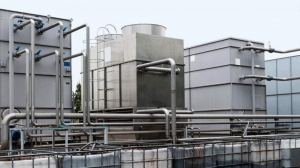please click here:
https://www.everhealgroup.com/pharmaceutical-filling-equipment.html
Introduction
In modern manufacturing, powder packing machines play a pivotal role in ensuring that fine powders—from food ingredients and pharmaceuticals to chemical and cosmetic powders—are packaged accurately, safely, and efficiently. As industries strive for higher productivity and tighter quality control, the demand for reliable and versatile powder packing systems continues to grow. This article offers an in-depth exploration of powder packing machines: what they are, how they work, their types, key components, benefits and drawbacks, best practices for selection and maintenance, and emerging trends. By the end, you'll have a comprehensive understanding of how to choose and apply the right powder packing solution for your needs.
What Is a Powder Packing Machine?
A powder packing machine is a piece of industrial equipment designed to dose and package powdered materials into units (such as pouches, jars, bags, or sachets) with precision and consistency. The goal is to deliver the correct amount of powder, maintain product quality, reduce waste, and increase throughput. These machines are widely used in industries such as food and beverage, nutraceuticals, pharmaceuticals, cosmetics, chemicals, and agriculture.
Powder packaging differs significantly from liquid packaging. Unlike liquids, powders can vary in bulk density, flowability, and compressibility, which creates unique challenges in metering, conveying, and sealing. Powder packing machines must tackle these challenges by using specialized dosing mechanisms, vibration techniques, gas purging, and tight dust control to maintain cleanliness and protect workers.
Key Types of Powder Packing Machines
Understanding the types of powder packing machines is essential when selecting the right system for your application. Here are the major categories, along with their distinguishing mechanisms:
Auger Fillers
Auger filling machines use a rotating screw (the auger) to dose powder into containers. The amount of powder dispensed depends on the speed of the screw and the number of revolutions. These machines are highly effective for free-flowing powders and offer very precise fill weights.
Volumetric Cup Fillers
In cup fillers, a fixed-size cup picks up powder by volume, then dumps the contents into a container. These are simpler and often cheaper than more advanced systems, but the fill weight can vary if the powder density fluctuates.
Gravimetric (Weight-Based) Fillers
Gravimetric fillers determine the exact weight of powder required by using a weighing scale. The machine dispenses until the target weight is reached, making them highly accurate. These systems are particularly useful for powders with variable density.
Vibratory / Sifter Filling Machines
These systems use vibration or sifters to regulate the flow of powder into containers. They are ideal for fragile or cohesive powders that do not flow readily under gravity or auger action.
Multi-head Packagers
In high-throughput scenarios, multi-head packaging machines (sometimes called combinatorial or linear) combine multiple dosing heads (e.g., vibratory or auger) to allow simultaneous filling of several containers, significantly boosting capacity.
Sachet / Stick Pack Machines
These are vertical form-fill-seal (VFFS) machines designed specifically for small, single-use sachets or stick packs, common in the food, health supplement, or cosmetic industries.
Main Components of a Powder Packing Machine
A powder packing machine typically consists of the following critical components:
-
Dosing System: This could be an auger, a cup, vibratory tray, or weighing platform.
-
Feed Hopper: A container from which powder is drawn; usually designed to minimize dead-volume and powder stagnation.
-
Control Unit: PLC or computerized control for regulating fill parameters, speed, and alarms.
-
Conveyor or Infeed/Outfeed System: To transport containers in and out of the filling area.
-
Sealing Mechanism: Depending on package type, this could be heat sealers, ultrasonic sealers, or capping heads.
-
Dust Management / Vacuum System: To contain airborne powder, reduce contamination, and improve safety.
-
Weighing / Measurement Sensors: For machines that measure by weight, load cells are used; for volumetric systems, other sensors may assist.
-
User Interface: Touchscreen or panel for configuration, recipe storage, and diagnostics.
-
Safety Enclosures: Guards, interlocks, and sometimes inert gas purging to prevent dust explosion.
Comparing Different Dosing Technologies
To help you decide which dosing mechanism fits your production requirements, here is a concise comparison:
| Dosing Method | Accuracy | Speed / Throughput | Best for Powder Type | Advantages | Limitations |
|---|---|---|---|---|---|
| Auger Filling | High | Moderate to High | Free-flowing, granular | Very precise, low waste | May struggle with fluffy or sticky powders |
| Volumetric Cup | Moderate | High | Consistent-density powders | Simple, cost-effective | Weight varies, density fluctuations |
| Gravimetric (Weight‑based) | Very High | Moderate | Variable-density powders | Excellent precision, traceability | Slower, more expensive |
| Vibratory / Sifter | Variable | Moderate | Fragile, cohesive powders | Gentle handling, good flow | Vibration tuning required, dust risk |
| Multi‑head Packager | High | Very High | High-volume production | Parallel filling, fast cycle | Complex set-up, higher maintenance |
Benefits of Using a Powder Packing Machine
Improved Accuracy and Consistency
By using precise dosing systems, powder packing machines can guarantee consistent fill weights, reducing overfill (waste) and underfill (noncompliance). This uniformity improves product quality and customer satisfaction.
Enhanced Productivity
Automating the packing process dramatically increases throughput compared to manual filling. Multi-head machines or high-speed auger fillers can handle hundreds to thousands of units per hour, depending on the configuration.
Better Hygiene and Safety
These machines often include dust containment, vacuum extraction, and tightly sealed enclosures. This reduces airborne powder, protecting worker health and mitigating fire or explosion risks in flammable or combustible powders.
Reduced Waste and Cost Savings
Precise dosing means less wastage of expensive raw material. Moreover, automated packaging reduces labor costs and can operate 24/7 with minimal operator intervention.
Flexibility and Scalability
Modern machines support recipe storage, quick changeovers, and modular heads. You can switch between product lines or pack sizes efficiently. This flexibility allows scaling operations without large capital reinvestment.
Traceability and Compliance
Especially with weight-based systems, you can generate batch records and ensure compliance with regulatory standards (for instance, in pharmaceuticals or food industries). This helps with audits and quality assurance.
Challenges and Risks
Dust Control and Explosion Risk
Powder particles can become airborne and form explosive mixtures. Without proper dust collection and inerting systems, there is a risk of fire or explosion. Regulatory compliance (e.g., ATEX in Europe) must be carefully managed.
Product Variability
Some powders are hygroscopic, sticky, or prone to caking. These characteristics can make dosing difficult. If a machine is optimized for one powder type, switching to another may require significant reengineering.
Maintenance and Wear
Parts like screws, augers, and vibratory trays wear over time. Abrasive powders (e.g., silica, metal oxides) can accelerate wear. Regular maintenance is essential, but this means downtime and potential loss of productivity.
Cost of Capital
High-precision machines, especially weight-based systems, represent a substantial investment. For smaller operations, capital expenditure may pose a barrier.
Complexity of Operation
Highly automated machines are sophisticated, requiring skilled operators for setup, calibration, and troubleshooting. Training and staffing must be considered.
How to Choose the Right Machine for Your Needs
Analyze Your Powder Characteristics
Start by thoroughly evaluating the physical properties of your powder: bulk density, particle size distribution, flowability, moisture content, and whether it's cohesive or abrasive. Knowing these factors will guide you toward the right dosing method.
Determine Your Throughput Requirements
Calculate your target units per hour, shifts per day, and batch sizes. Higher-throughput operations may benefit from multihead machines, whereas smaller operations might lean toward a simpler auger filler.
Consider Accuracy Needs and Regulatory Requirements
If you require precise fills for compliance (for example, in pharmaceuticals), gravimetric systems may be non-negotiable. For more commoditized products where slight weight variations are tolerable, volumetric or auger systems may suffice.
Packaging Format and Flexibility
Do you want to pack into sachets, jars, or bags? How often do you change products or pack sizes? Look for machines that support multiple formats and quick changeovers if you have diverse SKUs.
Maintenance, Support and Spare Parts
Evaluate the supplier's after‑sales support, availability of spare parts, and ease of maintenance. Machines that require frequent downtime but have poor support can become costly liabilities.
Safety Features
Ensure the machine meets safety and regulatory standards relevant to your region (for example, ATEX, OSHA). Confirm if it includes dust extraction, inerting, explosion relief, or interlocks.
Total Cost of Ownership
Beyond the upfront cost, consider energy consumption, maintenance costs, labor, spare parts, and potential downtime. A seemingly cheaper machine may cost more in the long run if it's inefficient or unreliable.
Real‑World Applications: Case Studies
Food & Beverage – Protein Powder
A supplement manufacturer needed to package whey protein into 500-gram tubs. They implemented an auger filling machine with a gravimetric check-weigher. Because whey can clump, they installed a vibratory feeder in the hopper. This system ensured accurate dosing, minimized wastage, and reduced packaging rejections. The plant increased throughput by nearly 30 percent and improved fill consistency, leading to fewer customer complaints.
Pharmaceutical – Dry Granular Drug
A pharmaceutical company needed precise filling of a dry granulated drug into sachets for single-dose use. Accuracy was vital due to regulatory constraints. They opted for a multi-head gravimetric system integrated with a VFFS (vertical form-fill-seal) sachet machine. Each head dispensed into sachets simultaneously, and the system produced traceable batch records. The result was streamlined regulatory compliance, reduced product giveaway, and capacity for future scale-up.
Chemical – Industrial Catalyst Powder
An industrial chemical plant packages abrasive catalyst powders. Due to the abrasive nature of the powder, the manufacturer selected a gravimetric auger filler made of hardened materials. They also incorporated an inerting system (nitrogen blanket) to prevent moisture and oxidation. With proper dust extraction and explosion suppression, the system met safety norms while reducing material loss.
Best Practices for Operation and Maintenance
-
Regular Calibration
Frequently calibrate your measurement systems (weighing scales or augers) to maintain accuracy. This should be built into your maintenance schedule. -
Daily Cleaning and Inspection
Clean hoppers, feeders, and filling heads every shift to prevent residue buildup, cross-contamination, or caking. Inspect wear parts, such as screws, for signs of erosion or damage. -
Dust Extraction and Inerting
Maintain your dust extraction system and check filters regularly. For combustible powders, check inerting systems or pressure-relief vents as per safety guidelines. -
Spare Parts Management
Keep critical spare parts (load cells, auger screws, sealing jaws) in stock to reduce downtime if components fail. -
Training Operators
Train staff on not only routine operation but also on troubleshooting procedures. Operators should know how to respond to alarms, perform re‑calibration, and carry out basic maintenance. -
Implement Recipe Management
For multi-product operations, use recipe-based controls so that changeovers are consistent and repeatable. -
Documentation and Record‑Keeping
Maintain batch records, calibration logs, cleaning schedules, and maintenance histories. These documents help with traceability and regulatory compliance.
Emerging Trends and Innovations
Industry 4.0 and IoT Integration
Powder packing machines are increasingly connected to Industry 4.0 systems. Remote monitoring, predictive maintenance, and real-time analytics allow manufacturers to detect performance issues before they escalate.
Automation and Robotics
Robotic arms are being used to handle containers before and after filling. This can reduce manual labor, errors, and ergonomic risks.
Advanced Dosing Technologies
Newer systems combine gravimetric weighing with volumetric feeding to optimize speed and accuracy. Hybrid fillers adapt depending on powder behavior in real time.
Sustainable Packaging and Materials
There is a growing demand for eco-friendly packaging materials—biodegradable pouches, recyclable jars—and machines are being adapted to handle them, requiring modifications in sealing systems and temperature control.
Enhanced Safety Features
Next-generation machines include integrated explosion suppression, real-time environmental monitoring (for oxygen levels), and smart interlocks to ensure compliance with rigorous safety standards.
How to Implement a Powder Packing Machine in Your Facility
-
Perform a Feasibility Study
Start by evaluating your current packaging process, costs, fill accuracy, throughput, and safety risks. Identify pain points and define the ROI you expect from automation. -
Engage a Reputable Supplier
Work with experienced machine manufacturers or integrators who understand your industry. Ask for case studies, references, and demonstrators. -
Prototype and Test
Run tests with real powder under production conditions. Measure fill accuracy, cycle time, and dust generation. Use this data to fine-tune the system before full deployment. -
Plan for Installation
Ensure that your facility has adequate floor space, power supply, dust-extraction ducts, and inerting (if required). Create installation and commissioning plans. -
Train Personnel
Include both operators and maintenance staff in training before startup. Develop standard operating procedures (SOPs) and troubleshooting guides. -
Validate and Qualify (If Required)
For regulated environments (e.g., pharmaceutical), carry out process validation and qualification (IQ/OQ/PQ) to ensure the machine meets performance and safety standards. -
Scale and Improve
Once the system is live, monitor performance metrics (fill accuracy, downtime, rejects) and use continuous improvement techniques. Leverage data from connected systems to optimize yield and efficiency.
Common Mistakes to Avoid
-
Selecting a machine without testing their own powder: many manufacturers underestimate how different powders behave.
-
Ignoring dust safety and containment: inadequate dust control can lead to health, quality, and safety issues.
-
Not budgeting for spare parts or maintenance: a cheap machine with high downtime or replacement costs is not cost‑effective.
-
Over‑automation too early: it may make more sense to optimize your process manually before investing heavily.
-
Neglecting documentation: especially in regulated industries, poor record-keeping can lead to compliance failures.
Future Outlook for Powder Packing Machines
As demand for powdered products continues to rise—driven by nutrition supplements, plant-based proteins, instant foods, and advanced materials—the role of powder packing machines will become even more central. We can expect further convergence of automation, safety, and sustainability. Machines will become smarter, faster, and more adaptable. With AI-driven predictive maintenance, manufacturing workflows will be optimized to reduce waste and maximize uptime. Moreover, 3D printing and flexible packaging may reshape how powders are packaged, stored, and distributed, demanding new filling technologies. For companies willing to invest, powder packing machines represent a strategic asset—not just a means to fill containers, but a gateway to better quality, lower costs, and more resilience in supply chains.
Conclusion
Powder packing machines are indispensable in industries that handle powdered materials. Choosing the right machine requires careful consideration of the powder's properties, the required throughput, accuracy, regulatory demands, and safety standards. By understanding key dosing technologies, evaluating components, and planning for maintenance and scale-up, manufacturers can dramatically improve efficiency, reduce waste, and ensure consistent product quality. As automation, IoT, and sustainable packaging continue to evolve, the future of powder packing looks brighter—and smarter—than ever.
Questions & Answers
Q1: What type of powder packing machine is best for very light, fluffy powders?
A1: For very light or low-density powders, a vibratory or sifter filling system is often optimal because it gently moves the powder without compressing it, which helps maintain accuracy and avoids bridging or rat-holing.
Q2: How do you prevent dust explosions when using a powder packing machine?
A2: Effective dust control involves using extraction systems, inerting (such as nitrogen blanketing), explosion relief vents, and interlocks, as well as strict adherence to relevant safety standards such as ATEX.
Q3: Can one machine handle multiple powder types and package formats?
A3: Yes. Many modern machines support recipe-based control, modular heads, quick changeovers, and interchangeable parts, making them versatile enough to deal with different powders and packaging formats.
Q4: How often do powder packing machines need calibration?
A4: Calibration frequency depends on regulatory requirements, production volume, and accuracy demands. However, regular calibration (for instance, weekly or monthly) of weighing systems and dosing components ensures consistent performance.
Q5: What is the return on investment (ROI) for implementing a powder packing machine?
A5: ROI depends on several factors: labor savings, reduced material waste, increased throughput, lower reject rates, and improved consistency. For many manufacturers, the payback period ranges from six months to a few years, depending on scale and utilization.
Summary
This comprehensive guide explains what powder packing machines are, the main types (auger, volumetric, gravimetric, vibratory, multi‑head), key components, benefits and challenges, and how to choose the right system. It gives real‑world uses, maintenance advice, emerging trends such as IoT and automation, common pitfalls, and a roadmap for successful implementation.






